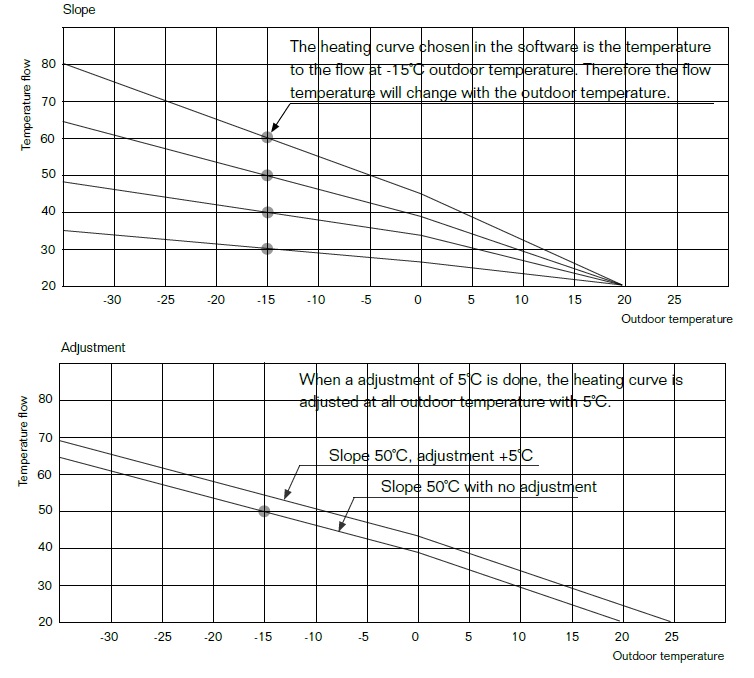Outdoor reset technology, which bases operational temperatures on the outdoor temperature, is going to be eclipsed by innovative control technologies that can utilize more factors. As an efficiency solution, outdoor reset is a step above older technologies that use no external factors for achieving a measure of system efficiency, but there are plenty of external factors that, if taken into account, would improve efficiency even more. Information about energy intelligence software that accounts for these factors follows below, but first a review of outdoor reset.
Outdoor reset is a technology that matches up heating and cooling temperatures with corresponding outdoor temperatures. The purpose of this match-up is to increase efficiency by lowering systemic losses of energy that naturally occur from the production and distribution of thermal energy.
Here’s how outdoor reset works. Heating curves are shown in the image below. One of the curves is chosen manually by an installer or commissioning agent. The colder the outside temperature, the hotter the water that’s produced (or the longer the system runs, in the case of steam systems). The heating curve slope is chosen manually (top image) and the level of the slope is also chosen (2nd image).

Choosing an Outdoor Reset Curve
Often there are more than a dozen curves to choose from. There is inherently some uncertainty in choosing a curve. One could argue that choosing a curve is part art and part science. The main objective is to find a curve that will work for the building, and that leaves some room for error. Finding that a curve is not steep enough, for example, is only going to be discovered when it’s really cold out. This is not a good result. Yet by choosing a steeper than necessary curve, some system efficiency is sacrificed.
Once the system is set up, the chosen curve is usually not changed more than once or twice, if at all, so there’s not much in the way of “fine-tuning”. There’s just too much uncertainty for any one person or team to deal with.
Upgrading from Outdoor Reset to Leanheat AI
Among the factors that can be used to improve system efficiency is a group of building-specific factors such as how a building reacts to sun (e.g. amount of sunshine, time of day and time-of-year), wind (speed and direction), and thermal inertia. Other important factors that are accounted for are individual unit temperatures, particularly those units farthest from the heat source. What’s needed to account for all these factors is energy intelligence software using algorithms that learn and adapt.
Leanheat AI actually takes into account all these extra factors and creates, without human intervention, a heating curve unique to the building. As a result, the heating system runs more efficiently. In Finland, where Leanheat was first introduced, efficiency improvements of 10-20% have been realized.
An added benefit has been lower technical maintenance costs, such as from identifying and correcting housing units where climate control is problematic.

